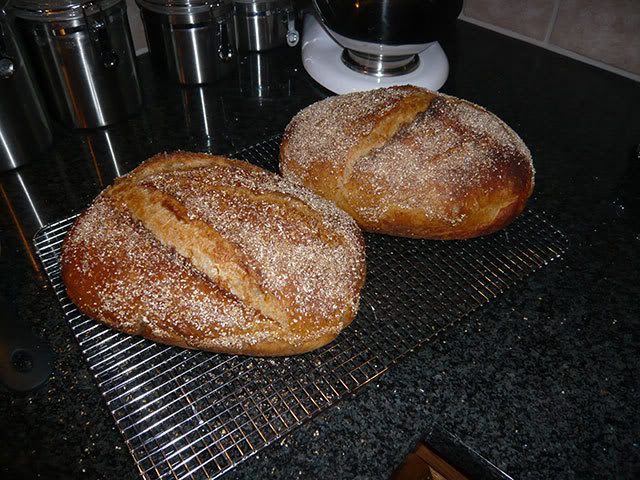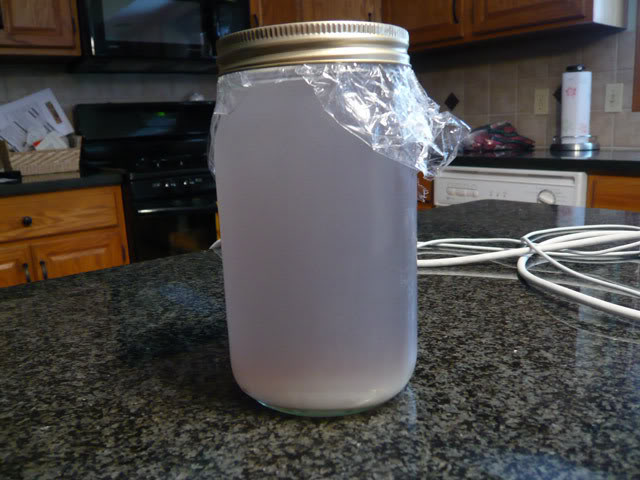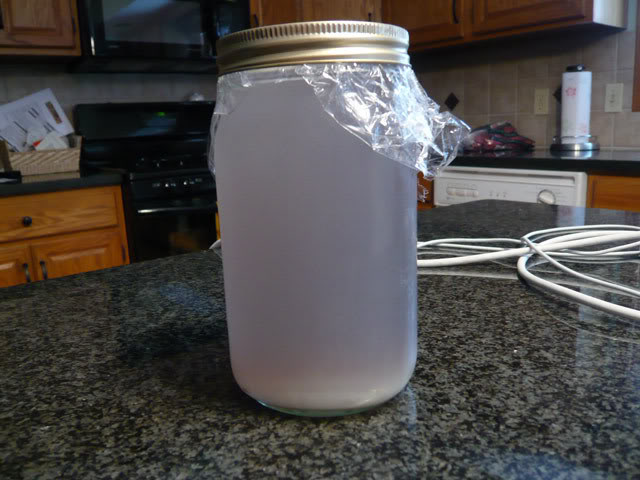PieSusan
Washing Up
I wrote this after being asked a lot of question on bread baking on another forum. It was synthesized from years of reading about bread making and my own kitchen experience. I hope you find it helpful as well.
Pie Susan's Bread Primer (for those new to the chat or to breadbaking)
For best results, make sure all ingredients are at room temperature.
Mixing flours: The secret is balance and knowing what is high and what is low gluten flour
Flour and Grains:
All-purpose flour (blend of hard and soft wheat)--may replace bread flour with a slightly denser, more cakelike result.
Bran flour--provides rich flavor, texture and fiber
Brown rice flour--gluten-free, dry texture, sweet nutty taste
Buckwheat flour--gluten-free, distinctly bitter flavor
Chestnut flour--sweet, starchy flour
Chickpea flour----gluten-free, adds a rich flavor
Coarse semolina flour (mix with bread flour to make a loaf)
Cornmeal flour, gritty coarse texture, sweet corn flavor
Fine semolina or durum flour (high gluten flour)
Gluten flour--made from hard wheat, generally used in conjunction with low gluten flour.
Granary flour (combination of whole wheat, white and rye)--makes a sweet nutty loaf
Millet flour--low in gluten, distinctly sweet
Polentas--white or yellow cornmeal with a coarse grind--If recipe calls for it, look for an Italian brand.
Potato flour--gluten-free, used as a thickener, produces a moist crumb
Quinoa flour----gluten-free, contains more protein than any other flour as well as 8 essential amino acids.
Rolled oats--rich, nutty flakes
Rye flour--provides rich, sour flavor and a dense texture.
Spelt flour--low in gluten, slightly nutty flavor (ancient form of wheat)
Unbleached flour (bread flour) makes an elastic dough and lighter loaf
Whole-wheat flour (makes for denser bread --bran hinders rising)
Other Ingredients and what they do:
Yeast--avoid quick rising yeast--it is the long, slow rising process that develops flavor in Pie bread.
Fat--imparts flavor, richness and tenderness.
Milk and buttermilk: create a velvety grain, browner crust and a creamy-white crumb.
Salt--keeps the yeast in check, strengthens the gluten, and accents flavor of other ingredients (just as it does in cooking)
Sugar or other sweeteners: creates rich brown color to the crust through carmelization.
Finishing Touches:
Slashing the top--allows bread to expand during the rise without a bread "blowout."
Washing: each kind does something different
--Water wash: Helps steaming, creates a crunchier crust
--Whole egg wash: imparts a shiny-bronzed surface
--Egg white wash: shiny like whole egg wash but is transparent
--Egg yolk wash: Very golden crust
--Milk wash: Bronzed crust, soft and less shiny
--Melted butter wash: (before or after or both) softer, rich flavored crust
Sprinklings:
Kosher or coarse sea salt
Herbal salt substitutes
Chopped herbs
Sesame seeds
Poppy seeds
Sunflower seeds
Minced garlic or onion
Grated hard cheese
Chopped nuts
Or mishmash
Pie Susan's Bread Primer (for those new to the chat or to breadbaking)
For best results, make sure all ingredients are at room temperature.
Mixing flours: The secret is balance and knowing what is high and what is low gluten flour
Flour and Grains:
All-purpose flour (blend of hard and soft wheat)--may replace bread flour with a slightly denser, more cakelike result.
Bran flour--provides rich flavor, texture and fiber
Brown rice flour--gluten-free, dry texture, sweet nutty taste
Buckwheat flour--gluten-free, distinctly bitter flavor
Chestnut flour--sweet, starchy flour
Chickpea flour----gluten-free, adds a rich flavor
Coarse semolina flour (mix with bread flour to make a loaf)
Cornmeal flour, gritty coarse texture, sweet corn flavor
Fine semolina or durum flour (high gluten flour)
Gluten flour--made from hard wheat, generally used in conjunction with low gluten flour.
Granary flour (combination of whole wheat, white and rye)--makes a sweet nutty loaf
Millet flour--low in gluten, distinctly sweet
Polentas--white or yellow cornmeal with a coarse grind--If recipe calls for it, look for an Italian brand.
Potato flour--gluten-free, used as a thickener, produces a moist crumb
Quinoa flour----gluten-free, contains more protein than any other flour as well as 8 essential amino acids.
Rolled oats--rich, nutty flakes
Rye flour--provides rich, sour flavor and a dense texture.
Spelt flour--low in gluten, slightly nutty flavor (ancient form of wheat)
Unbleached flour (bread flour) makes an elastic dough and lighter loaf
Whole-wheat flour (makes for denser bread --bran hinders rising)
Other Ingredients and what they do:
Yeast--avoid quick rising yeast--it is the long, slow rising process that develops flavor in Pie bread.
Fat--imparts flavor, richness and tenderness.
Milk and buttermilk: create a velvety grain, browner crust and a creamy-white crumb.
Salt--keeps the yeast in check, strengthens the gluten, and accents flavor of other ingredients (just as it does in cooking)
Sugar or other sweeteners: creates rich brown color to the crust through carmelization.
Finishing Touches:
Slashing the top--allows bread to expand during the rise without a bread "blowout."
Washing: each kind does something different
--Water wash: Helps steaming, creates a crunchier crust
--Whole egg wash: imparts a shiny-bronzed surface
--Egg white wash: shiny like whole egg wash but is transparent
--Egg yolk wash: Very golden crust
--Milk wash: Bronzed crust, soft and less shiny
--Melted butter wash: (before or after or both) softer, rich flavored crust
Sprinklings:
Kosher or coarse sea salt
Herbal salt substitutes
Chopped herbs
Sesame seeds
Poppy seeds
Sunflower seeds
Minced garlic or onion
Grated hard cheese
Chopped nuts
Or mishmash



